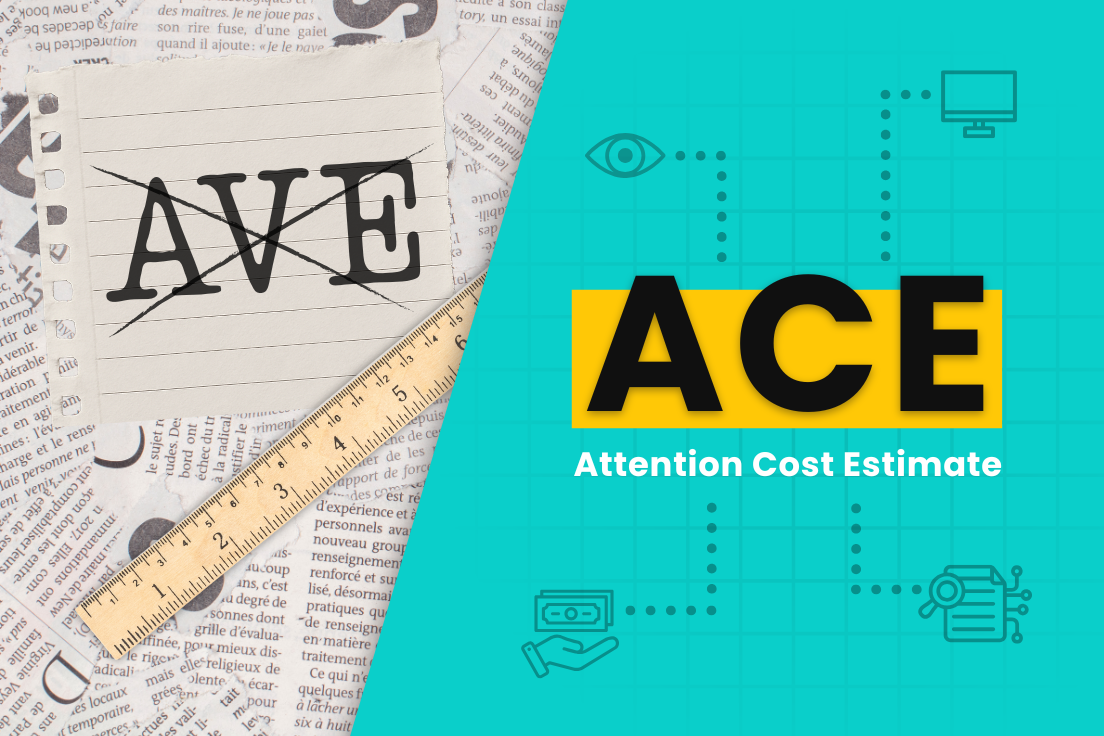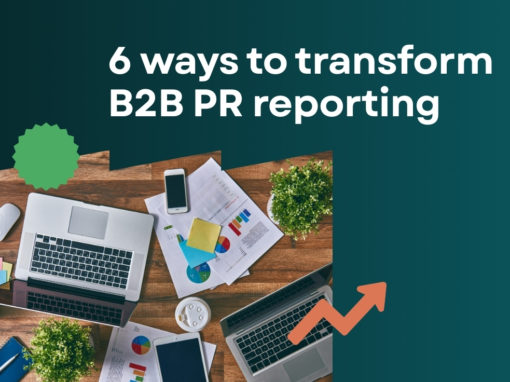PR drives real business outcomes. It always has and it always will. Articulating the value that PR brings to key stakeholders, however, can be challenging. In fact, 50% of PR and comms professionals said the inability to measure their own impact effectively is the most common challenge they face, in a recent survey by Root.
The current economic environment certainly doesn’t help either. There’s increasing competition for budgets and even more scrutiny from leadership. Finding new ways to demonstrate the unique power of PR is, therefore, absolutely critical.
The original purpose of AVE was to indicate the monetary value of PR by calculating the cost of print media space, and applying that cost (plus a magnifier) to earned media with the same dimensions. It was flawed back then, and those issues have only been exacerbated with the advent of digital media.
It’s not hard to see why the International Association for Measurement and Evaluation of Communication (AMEC) rejected AVE. The Chartered Institute of Public Relations (CIPR) followed suit and banned its members from using it as well.
Despite intense pushback from all corners of the industry, we all know that AVE is still being used today.
We speak to hundreds of PR professionals across the world each month, and AVE is a topic that comes up regularly.
Many tell us their clients, or boards, still demand it and that they’ve been searching for a more reliable alternative to AVE for a long, long time. Well, as the phrase goes, good things come to those who wait. There is now an alternative that’s much more credible.
We’re excited to introduce a new suite of PR metrics to the industry. Enabled by new eye-tracking technology, they focus on attention.
Specifically, the amount of attention received by online media coverage (Attention Earned), and the cost of purchasing that same amount of attention through digital ads (Attention Cost Estimate, or ACE).
See, even the acronyms are better!
In this blog post, we’ll outline what AE and ACE are and the unique benefits these online attention metrics bring to PR reporting.
What are the new attention metrics in PR and how do they work?
Showing the amount of attention that editorial coverage has received is helpful to PR professionals looking to prove that they’ve driven brand awareness at scale.
The Attention Earned (AE) metric calculates how many hours of focused attention that online media coverage has likely received.
When customers of our PR reporting platform, Releasd, add their coverage links to a report, we display that coverage in a visual way, and do some automated number crunching.
The system uses known factors such as word count and combines them with independent research on how these affect focused reading time. We then multiply by the number of readers (Coverage Views) to calculate total Attention Earned in hours.
The AE figure takes into account that not everyone reads an article in full, and that different articles attract different amounts of attention.
But what about Attention Cost Estimate, or ACE?
Enabled by new, highly accurate eye-tracking technology, it’s now possible to measure how much focused attention is being paid to any content that appears on a screen, in real time.
Multiple studies have now been carried out (with willing participants we might add) that have enabled marketers to track the attention that is paid to ads of different types.
Yes, we know that advertising is fundamentally different from PR. But what they do share in common is a need for attention. In fact, attention is a pre-requisite for all forms of marketing.
So when the first ever rate card for attention was published by the advertising industry, we had the final piece of the jigsaw.
ACE is the amount of digital ad spend that would be required in order to attract the same amount of attention generated by earned online coverage.
Bearing in mind that the cost of earned coverage is always zero by definition, it gives PR professionals a powerful new ‘comparative’ metric when presenting results back to clients, CMOs and senior leadership teams.
“Hey, we got you 10,000 hours of attention without spending a penny on publishers. Try doing that with ads!”
How is Attention Cost Estimate (ACE) different from Advertising Value Equivalency (AVE)?
ACE is an attention-based metric that’s designed to provide a credible and compelling comparison of the cost of PR vs adjacent marketing disciplines, without relying on the archaic and discredited AVE.
Unlike AVE, Attention Cost Estimate relates to costs only, and does not claim to represent the value of an ad or online article. The cost of attention is based on data from impartial third party studies. And this will evolve and improve over time.
Crucially, ACE uses a simple, defensible common denominator (attention) rather than an ambiguous one (print dimensions). And importantly, ACE doesn’t rely on an arbitrary three times multiplier to beef up the final figure!
Overall, ACE tells a much better story than AVE and really does show C-suites and stakeholders that PR isn’t just a worthwhile investment, it’s a business critical one.



